Mitch Hokanson, 39, peers out the window of the roaring aircraft. Down below, a thin smoke coil emerges from a patch of pine trees. It’s been a dramatic fire season in the West. Drought conditions mixed with a rash of lightning strikes have caused small fires to break out. Close to 8.9 million acres have been burned by wildfires so far in 2015 — well above last year's 3 million acres during the same time period.
Inside the plane, nine men strapped with parachutes and gear are ready to leap out the open door. They are part of an elite, and rarely seen, group of wildfire fighters employed by the U.S. Forest Service. Their mission: to stop the flames before they spread.
While it might take days for other crews to reach remote fires, depending on the location, this team can be at the scene, battling a fire in 30 minutes. The pay is modest, conditions treacherous, and hours can be long. Meet the California Smokejumpers.
Inside the plane, nine men strapped with parachutes and gear are ready to leap out the open door. They are part of an elite, and rarely seen, group of wildfire fighters employed by the U.S. Forest Service. Their mission: to stop the flames before they spread.
While it might take days for other crews to reach remote fires, depending on the location, this team can be at the scene, battling a fire in 30 minutes. The pay is modest, conditions treacherous, and hours can be long. Meet the California Smokejumpers.

Hot, Dry Conditions Fuel Western Fires
The map below shows 2015 fires as detected by the U.S. Department of Agriculture's satellite monitoring system. A large number of fires are concentrated in the mountains of central California where the region is experiencing exceptional drought.

NOTES: Fires through Sept. 23, 2015. Drought conditions for the week of Sept. 15, 2015.
SOURCES: USDA Forest Service, U.S. Drought Monitor
Big Increase in Wildfire Activity in 2015
Close to 8.9 million acres have been burned by wildfires so far in 2015 — well above last year's 3 million acres and the 10-year annual average of 6.9 million acres between the same time period.

NOTES: Acreage from Jan. 1 – Sept. 23 of each year.
SOURCE: National Interagency Fire Center
Additional Credits
Executive Producer DAN SILVER
Managing Editor XANA O'NEILL
Supervising Producer RONNIE POLIDORO
Creative Design Director LORI NEUHARDT
Video Editor ARTHUR NIEMYNSKI
Senior Developer GREG ATRIA
Interactive Designer JAN DIEHM
Executive Producer DAN SILVER
Managing Editor XANA O'NEILL
Supervising Producer RONNIE POLIDORO
Creative Design Director LORI NEUHARDT
Video Editor ARTHUR NIEMYNSKI
Senior Developer GREG ATRIA
Interactive Designer JAN DIEHM

